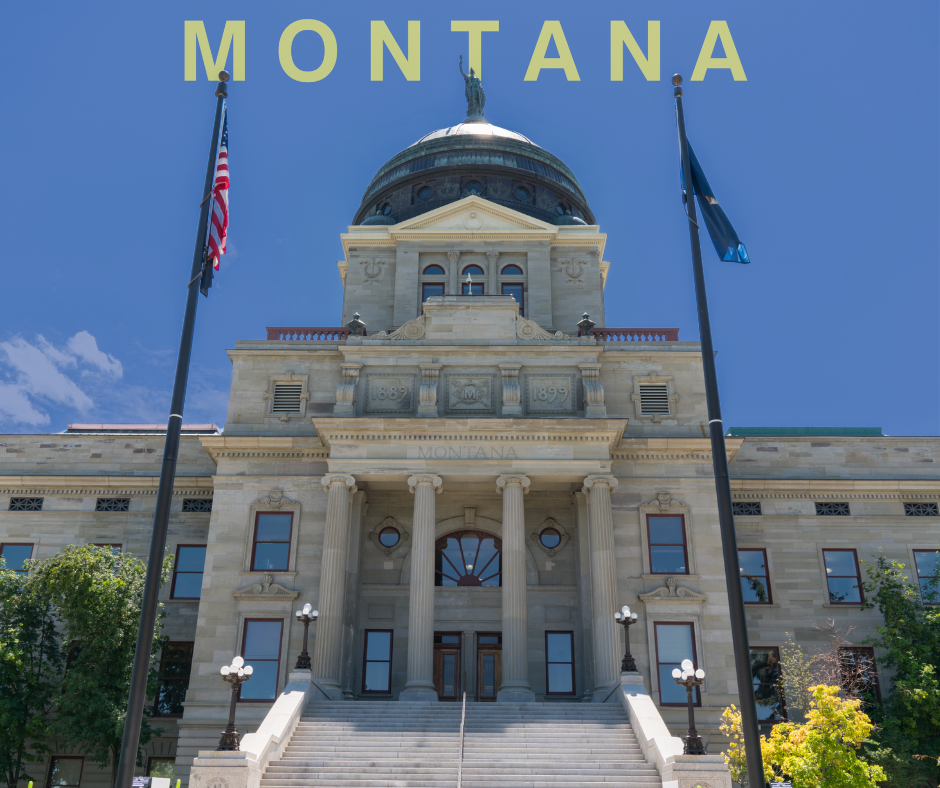Here’s the Truth About Montana’s Minimum Liability Limits

Pioneer Spirit
Since 1951, Montana has been a pioneer in protecting its citizens on the roadways, establishing a comprehensive minimum liability car insurance requirement that has become a model for responsible driving legislation.
Evolving over decades, the state has crafted insurance regulations that seek to balance driver protection and financial accountability.
What’s Required?

Just a little bit
Montana statute (61-6-103) establishes the minimum financial liability requirements for liability auto insurance.
- $25,000 because of bodily injury to or death of one person in any one accident and subject to the limit for one person;
- $50,000 because of bodily injury to or death of two or more persons in any one accident; and
- $20,000 because of injury to or destruction of property of others in any one accident.
What Does the Liability Part Mean?

Liability insurance is for when YOU pay “the other guy”
In the context of car insurance, liability refers to financial responsibility for injuries or damages you cause to others while operating your vehicle.
Liability Car insurance has two primary components:
- Bodily Injury Liability: Covers medical expenses and lost wages of other people injured in an accident that you caused.
- Property Damage Liability: Pays for damage to other people’s property, such as their vehicles or structures, resulting from an accident you’re at fault for.
What Doesn’t Liability Coverage Cover?

It is important to understand
Liability coverage is only one of the main categories of auto coverage that is available to insure your vehicle
Other important categories of car insurance that are available but are not mandated by the State of Montana include:
- Medical Payments Coverage: Helps pay for medical expenses for you and your passengers after an accident, regardless of fault. It can cover costs like doctor visits, hospital stays, and ambulance fees
- Uninsured and/or Underinsured Coverage: Protects you if you’re in an accident with a driver who has no insurance or insufficient coverage. It can help cover medical expenses and lost wages.
- Collision Coverage: Helps pay for damage to your vehicle resulting from a collision with another vehicle or object or if your vehicle is overturned.
- Other than Collision (Comprehensive): Protects your vehicle from non-collision related incidents such as theft, vandalism, or weather damage
Are Montana’s State Liability Coverage Limits Enough?

This is the make or break question that only you can decide
When evaluating the pros and cons of this decision, there are a few things that you might want to consider:
- State minimum requirements often do not accurately reflect the true cost of a serious accident
- If a serious accident occurs and your liability insurance is exhausted you will be on the hook for the remaining balance
- Healthcare costs only go in one direction and that is up
- The base cost of replacing and repairing vehicles has only gone up
- Accident related judgements can impact your future earnings through garnishments
Let’s Take a Closer Look

Reconnaissance in progress
Montana’s State minimum liability requirements have not been revised in recent times
The last revision to the Bodily Injury per person and Bodily Injury per accident was made in 1975
A lot has happened During the last 50 years:
- Due to inflation, the purchasing power of the US dollar has declined creating a cumulative price increase over that period of 486.63%
- That means that prices in 2025 are approximately 5.87 times higher than in 1975
- Roughly, a single 2025 dollar can purchase 17% of what a 1975 dollar could purchase
The last revision for the liability limits for property damage occurred in 2013
Over the past 12 years the cumulative inflation rate was about 35.5%
The result is that the purchasing power of the US dollar has declined by approximately 26%
This means that a 2025 dollar only buys about 74% of what a 2013 dollar could purchase
Health care costs have increased, significantly outpacing general inflation
The cumulative increase in cost of about 2,220% over the 50-year period from 1975 to 2025 occurred
Relative to the 2025 dollar: $1 spent on healthcare in 2025 is equivalent to about $0.043 (4.3 cents) in 1975 purchasing power
The cost of repairing and maintaining vehicles in the US has increased substantially
From November 2013 to November 2023, vehicle repair costs rose by 49.8%
In 2023 alone, vehicle maintenance and repair costs increased by 6.5%
$1 spent on car repairs in 2025 has the purchasing power of about $0.64 in 2013 dollars
The Montana court system will hold the liable party accountable for the remaining balance when their policy limits are exhausted
Montana uses a 51% modified comparative negligence standard, which means an injured party can recover damages from you if they are less than 50% at fault for the accident
The court can order the liable party to pay the remaining balance through various means, including wage garnishment or asset seizure, potentially impacting your future earnings
What Happens If You Don’t Have Car Insurance in Montana?

Driving without auto insurance in Montana is a misdemeanor offense with significant legal and financial consequences
Here is a summary of what happens if you are caught driving uninsured in Montana
- First offense: $250-$500 fine
- Second offense: $350 fine
- Third or subsequent offense: $500 fine and/or up to 10 days in jail
- Fourth offense: Mandatory driver’s license surrender
But Wait, There’s More! Montana Isn’t Done With You Yet
Vehicle Registration Suspension
- Immediate suspension of vehicle registration upon second or subsequent convictions
- Registration cannot be reinstated until proof of insurance is provided
- Must pay replacement fees for license plates and registration decals
Restricted Driving Privileges
- Issuance of restricted registration receipt
- Limited to driving solely for employment purposes
- Restrictions can last 90-180 days depending on offense frequency
- Severe limitations on personal and family vehicle use
Difficulty Obtaining Future Insurance
- Many insurance carriers view uninsured driving as high-risk behavior
- Potential denial of coverage from standard insurance providers
- May be forced to seek high-risk insurance
- Potential requirement for specialized, expensive insurance policies
Significantly Higher Insurance Premiums
- Uninsured driving violations can increase insurance rates by 20-50%
- Rate increases can persist for 3-5 years
- Potential additional surcharges for repeated violations
- Total long-term cost can exceed thousands of dollars in additional premiums
Tips for Choosing the Right Coverage

There is a lot to consider
Factors to consider when selecting insurance
- Vehicle type: The make, model, and age of your car affect insurance rates.
- Driving habits: Your commute length and annual mileage impact premiums.
- Location: Where you live and park your car influences risk and costs.
- Personal factors: Age, driving record, and credit score affect rates.
- State requirements: Ensure you meet minimum liability coverage mandates.
- Asset protection: Consider coverage that safeguards your personal wealth.
Benefits of Higher Liability Limits

The benefit is real
- Better financial protection: Higher limits offer more coverage for serious accidents.
- Improved overall pricing: Insurance companies often favor those with higher limits.
- Access to higher uninsured/underinsured motorist coverage: Protects you against inadequately insured drivers.
- Asset preservation: Prevents the need to sell assets or pay legal fees out-of-pocket.
- Peace of mind: Provides greater security in case of costly accidents.
- Future insurability: May lead to better rates and options in the long term
Lets Sum it Up

It all adds up
Montana’s car insurance requirements, while pioneering in 1951, now face a stark reality check:
- Montana’s minimum liability coverage ($25,000/$50,000/$20,000) hasn’t kept pace with skyrocketing costs.
- Healthcare expenses have soared 2,220% since 1975, and vehicle repairs jumped 49.8% in just a decade.
- With Montana’s comparative negligence law and the risk of wage garnishment or property seizure, consider what would an adverse outcome mean for you?
- Would you shield your assets now which can lead to better overall pricing and invaluable peace of mind.
- In today’s economic environment, the bare minimum just doesn’t seem to cut it anymore
Lets Sum it Up

If you liked this article you can see more here
Knowledge is power. Interested in exploring what we can offer you?
Call: (406) 416-1096
We are an equal opportunity provider


Leave a Reply